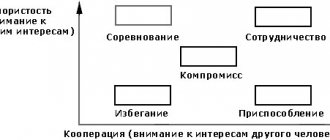22 June 2021, 17:35
You can't catch a black cat in a dark room. Turn on the light and catch!
I'll start with a quote from the famous spiritual guru of the West, Eckhart Tolle .
Accept first, act later. Whatever the present moment contains, accept it as if you chose it. Always work with him, not against him. Make him your friend and ally, not your enemy.
Many people misinterpret the concept of “accepting.”
Where does acceptance come from?
“All problems come from childhood” is a common phrase, but it is directly related to our topic. Acceptance starts from early childhood.
In the first years of life, a child recognizes himself, reflecting the values of the adults who raise him (in psychology, this mechanism is called introjection). The feedback he receives is the basis for the formation of the human psyche. This reaction can be very different, and the child will absorb any one.
To better understand the role of acceptance in a child’s life, it is necessary to take a short digression. Let us turn to the theory of object relations - this is one of the main psychoanalytic formulas for personality development. According to this theory, there is a certain core that is formed in the child’s psyche depending on the information that he receives (introjects) from the adult raising him. If a child's emotional needs are ignored, this core will become saturated with rejection.
The baby will verbally or non-verbally catch the message - “you are not there”, “you are not important”.
Speaking about rejection, it is important to remember that the little person is absolutely helpless and completely dependent on those around him. For a child’s psyche, rejection is the worst thing that can happen.
It can even lead to death. Depending on the child’s internal capabilities, his rejection can be directed either at himself or at others.
In the first case, the child has the following thoughts: “All the problems are in me, I’m not good enough” and “I put the needs of other people above my own, I lack internal support.” Such experiences lead to severe discomfort and entail a tendency to self-harm (self-harm) and even suicide. In the second case, people become unapproachable and cold. This will certainly lead to difficulties in relationships with loved ones and complicate a person’s adaptation to the world around him.
Sometimes an adult encourages only positive aspects in a child’s behavior: he ate the whole plate of porridge, brought an A from school, and does not upset the mother. And everyone else is ignored or condemned. The child’s psyche, like a sponge, absorbs these experiences: he begins to think that he exists only in those moments when he is successful.
He reads the verbal-non-verbal message: “You exist, but only partially; You have to be good to deserve attention and love.” But in reality, there are other aspects of personality that remain invisible. At first they are ignored by adults, and subsequently by the person himself.
An analogy can be drawn with how we post selfies on Instagram, trying to demonstrate ourselves from the most advantageous angle. We begin to feel that other aspects of our personality are unattractive and unworthy of attention.
American psychoanalyst Gerald Adler writes about introjective deficiency: this is a situation in which adults deprive the child of emotional support. As a result, he becomes vulnerable, he lacks internal reserve. He becomes strongly dependent on his parents, although with normal development the child strives for independence (“I myself!”).
One of the founders of the theory of object relations, British psychoanalyst Ronald Fairbairn, notes that children in this case are left without internal reserves that could support them in independent life: “They were forced to stay close to their power sources - like a driver who has no gas left. running out, he heads for the gas station.”
There is also a third “undesirable” scenario: if the parent praises the child and encourages any of his actions or whims. In this case, a spoiled child grows up, with a “crown on his head.”
A verbal-non-verbal message that a child reads from adults: “You are the best, you are the king of this world,” “Only you are important, and others are not important.” This “crown” will greatly interfere with relationships with loved ones in the future.
We have all met characters who seek to subjugate and humiliate those around them. Communication with them causes extremely unpleasant emotions. But there is also a downside. If some event shakes the self-esteem of such a person, it will greatly hurt him. After all, life did not prepare him for this.
It is important to note that in the process of growth and development, two directly opposite vectors coexist inside the child. On the one hand, there is a desire for merging, on the other, for separation and independence. Let's give a simple example: at the moment when the baby is in the mother's belly, a situation of complete fusion occurs. He is in the safest environment imaginable. And normally, all the needs of a little person are satisfied automatically.
With the successful development of events, with age a person begins to adhere to a certain golden mean. This position can be formulated as follows: “I am an individual person, with my own desires and needs, and there are also other people who have their own desires and needs. I interact with others equally, without ignoring them or relying on them excessively.” We generalize, but the essence does not change.
If a child receives inadequate feedback in childhood, a bias occurs: either towards fusion or towards absolute autonomy. In the first case, a person wants intimacy, a desire arises to “merge” with everyone around him. In the second, a person thinks that he is completely independent, and those around him do not seem to exist.
How to decide on a Descartes square using 4 questions?
To contents
This method was proposed by Rene Descartes, the famous French philosopher, engineer, mathematician, creator of the philosophy of radical doubt. His "square" method helps to understand the consequences of any choice.
Descartes Square is a simple but super-effective technique for helping you make difficult decisions. The idea of the method is to analyze any problem from different points of view.
Before making a decision, give honest answers to Descartes' 4 questions:
- What will happen if this happens?
- What happens if this doesn't happen?
- What won't happen if this happens?
- What won't happen if this doesn't happen?
Why is this method so effective? When a person is in a situation that requires making a difficult decision, he often gets stuck on the first point and is unable to fully evaluate the situation.
Attention! Be careful when answering the last question - the brain will try to ignore the double negative, and the answer will be identical to the first. It shouldn't be this way.
The Cartesian square allows you to make a balanced decision consciously by considering the problem from four different points of view.
So where is the acceptance here?
Acceptance is not just praise or criticism. This is adequate feedback that helps the child see himself as a whole, and not just his “good” or “bad” sides. Accepting a child is the foundation of adequate self-esteem, the formation of the psyche without a bias towards “plus” or “minus”.
The parent acts as a “non-crooked” mirror that makes the baby visible. Not embellished, not partially visible, but simply visible. Just like we see our reflection in a mirror. Of course, we may not like something about ourselves, but we pay more attention to something. But if the child’s psyche develops normally, everything should be reflected.
High-quality and low-quality fact search
Collecting information that allows you to understand everything and make a decision is the basis of any work with a problem. You must get the necessary facts to understand what needs to be changed or corrected. Good fact-finding will allow you to move quickly to the root cause of the problem; poor quality will create confusion and lead you into the wilds.
We once worked with a specialized production facility that sold components to other businesses. This company planned to move its operations from Western Europe to Eastern Europe to take advantage of cheap labor. All the facts related to cheaper production were taken into account and understood, but the company did not first take into account other variables and almost made a big mistake.
After collecting data on how the move would affect lead times, the company found that lead times would increase significantly. A survey of the most valuable customers showed that most of them consider fast order fulfillment a priority and it is the current deadlines that are the main reason for their loyalty. The company revised its plans and not only saved a lot of time and money, but also used these resources to further reduce lead times, which allowed it to gain an advantageous position in the market and increase profit margins in its product segment.
What can acceptance be confused with?
Acceptance in itself is a neutral thing.
However, due to the lack of experience of full or partial acceptance, it may be perceived differently. Due to previous negative experiences, acceptance is perceived as something purely positive. What is it often confused with?
With love
If a child in childhood had the experience of rejection or partial acceptance (“you are a good son if you please your mother”), then when faced with acceptance from another person, he experiences surprise. “I’m not good enough, do I really deserve such a good attitude?” And all this taking into account the fact that acceptance is neutrality.
When a person is used to being devalued and challenged, acceptance is experienced as something extremely positive. Sometimes this is enough to make you feel important and valuable. A person may even confuse this feeling with love.
However, it should be noted that acceptance is an integral component of love.
A clear example from life: receiving acceptance is similar to going from minus to zero on a credit card. It seems that the debt has been repaid, and in contrast to what happened, this brings joy.
With humility or passivity
In our culture, humility is something associated with submitting to someone else's will against one's own, something beyond one's control. Even the phrase “I’ve come to terms with it” sounds forced and joyless. Humility is perceived as the act of suppressing one's disagreement with something.
But the process of acceptance is more about allowing than suppression. It is the process itself, as well as its result, that becomes important to us.
If humility is a position like “my friend constantly humiliates me, but how can I be angry with him if he has such a character?”, then acceptance can be expressed by saying “my friend constantly humiliates me, and I am angry with him, I will not pretend that everything is okay.” Do you feel the difference?
When we say: “I accept my friend as he is, even though he humiliates me,” this is “false acceptance,” not real acceptance. In fact, we internally react to humiliation, but we try to disguise it or deny it. But it is impossible to deceive yourself.
A similar situation arises with a person’s acceptance of his “shortcomings.” Take the current topic of body positivity. Having superficially perceived the ideas of this movement, a person learns one thing: to be dissatisfied with one’s body is wrong, we need to accept ourselves as we are. And he begins to publicly tell how he likes the “imperfections” of his body.
It's good if this is true. However, dissatisfaction is often hidden behind the noble mask of acceptance. A person is gnawed by doubts: “Here I don’t like one thing, but here I don’t like something else.” This situation can also be classified as “false acceptance.” It is important to look at the root of your dissatisfaction, and not try to mask or deny it.
To summarize what has been said, let us turn again to the words of Alexander Badkhen:
“…acceptance is different from submission to oneself or others, making excuses for shortcomings or indulging in weaknesses. Acceptance means paying calm and clear attention to both possibilities and limitations. Acceptance is about recognizing what really is. Acceptance is different from passivity and is made possible through awareness.”
The pitfalls of opinion-based decisions
In business, we often see how decisions made based on opinions lead to all kinds of trouble. The company gathers a group to brainstorm a long list of ideas for further work. They then decide on priorities, often based on the subjective opinions of the crowd—for example, asking everyone to vote for three items on a list and then choosing those with the most votes. Wouldn't it be better to do a mathematical analysis and estimate which option would have the greatest impact on the company's operations, and then set priorities based on that? Only by using facts can we understand what exactly is of maximum objective value to a business.
Decisions based on opinions also lead to dead ends when they are mistakenly applied to practical problems. For example, people in my town, when they think about going home with their child, worry about whether there are guns in the house, but don't worry about the pool at all. […]
How to learn to accept?
“If I say I ‘accept’ you but don’t know anything about you, then in reality it is a superficial acceptance, and you understand that it can change if I really get to know you.”
- from Carl Rogers's book "Emerging Personality."
Acceptance is directly related to recognition.
How can I accept something about which I have only the vaguest idea?
There are two methods, it is advisable to use both.
First way. Try a new, eco-friendly method of self-digging (let’s face it, we all do it). Tell yourself: yeah, this situation (or something else) worries me, which means I reacted to something. Look, preferably in writing, for answers to the following questions.
How exactly did I react? Here it’s worth describing in detail your reactions: “I was hurt when he said the following...”, “I felt uneasy / unpleasant / scared / I’m furious.” The key is to be completely honest with yourself and not try to mask the ugly truth.
Why exactly this way and not another way? Here you don’t have to look for an exact formulation, otherwise you can go very far, it’s enough to limit yourself to assumptions.
Do I always react this way to situations like this, or was my reaction special here? Both options will work, depending on what exactly is bothering you.
Am I okay with this or do I want to change it? What do I want?
These questions will help you explore your reaction to the situation more openly.
It must be remembered that the ability to look at a problem openly is a basic, integral component of acceptance.
Second way. If some situations from this text seem familiar to you, you should think about what you missed in your time. Namely, to look for adequate feedback from the world. Turning to friends for this is a bad idea. You already have an established relationship with your friends, and any feedback will be “interested.” And in this case, you need feedback from a disinterested, but respectful person. Ideally, such a person would be a psychotherapist.
We cannot learn to accept unless we have the experience of being accepted by others. In order to accept yourself and others, you need to gain and appropriate such experience.
Of course, it is much more effective to seek answers to these questions together with a psychotherapist. But there is a high probability that you are not ready for this yet. Then try searching on your own.











